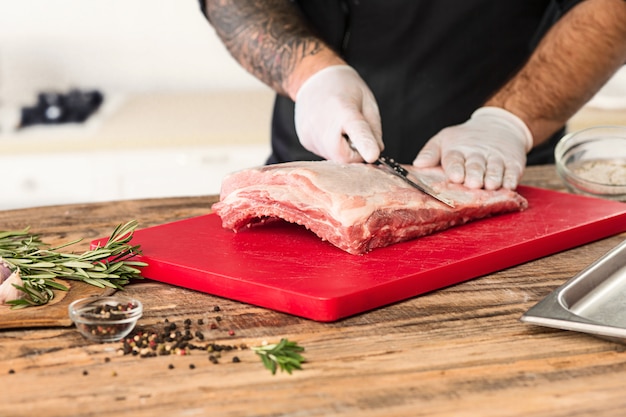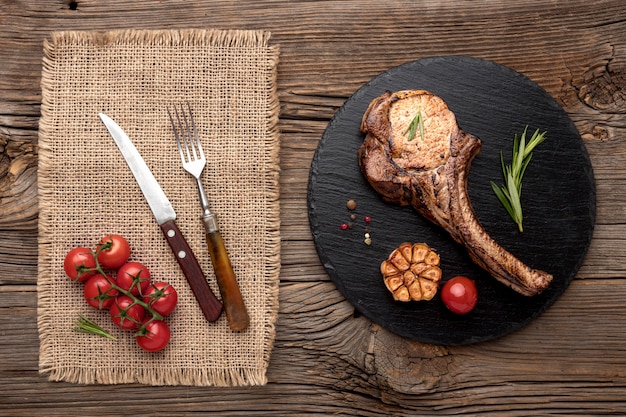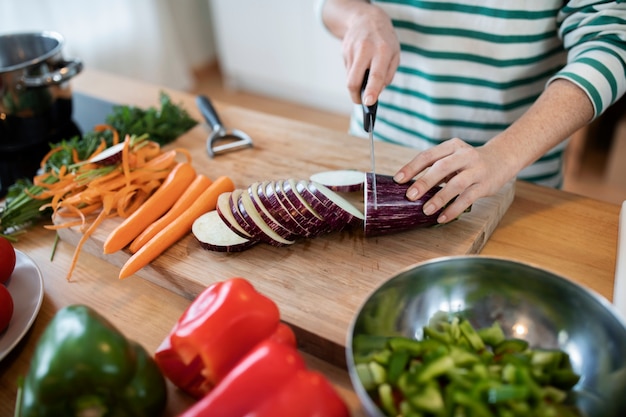(Part 1) Introduction to Elk Meat

For those who haven't yet encountered the delights of elk, let me tell you a little bit about these amazing creatures. Elk are majestic, big-bodied animals that roam the wild, particularly in North America and parts of Eurasia. Now, their meat, that's a whole other story. It's considered a real delicacy, and for good reason.
Why Elk? The Taste, the Sustainability, and the Experience
So, what makes elk so special? Firstly, it's absolutely delicious. Think of a leaner, more gamey version of beef, with a hint of something nutty that you won't find in your everyday steak. But it's not just about flavour. Elk meat is also a really sustainable choice. These animals are part of a natural ecosystem, and their populations are managed through hunting regulations. So, when you enjoy elk, you're not only getting a delicious meal but also contributing to a healthy environment. It's a win-win, wouldn't you say?
And then there's the experience. There's a real sense of connection to the food when you're working with elk meat, especially if you've been involved in the hunt. It's something that really stays with you, a reminder of the respect and appreciation you have for the animal and its role in the wild.
Elk Meat vs Beef: A Closer Look
Let's break down the differences between elk and beef. One of the main distinctions is the fat content. Elk is much leaner, which means it's lower in calories and saturated fat. It's a healthier option for those who are watching their intake.
However, that leanness also means elk meat can be a little tougher than beef. But don't worry, we'll explore the best cooking techniques for elk later on, so you can get that perfect tender texture.
Here's a quick comparison table to help you visualize the key differences:
| Elk | Beef | |
|---|---|---|
| Fat Content | Significantly Lower | Higher |
| Calories | Lower | Higher |
| Flavor | Gamey, Slightly Nutty | Rich, Beefy |
| Texture | Leaner, Tougher (unless cooked properly) | Marbled, More Tender |
As you can see, elk provides a fantastic alternative for those who are looking for a lean, flavourful protein source. It's a delicious way to introduce a bit of the wild into your culinary world.
(Part 2) choosing the right cut of Elk

Just like with beef, the specific cut of elk you choose will play a significant role in how it cooks and what it tastes like. It's all about finding the right cut for your desired outcome. So, let's talk about some of the most popular cuts for elk steaks, and what makes them so special:
1. Elk Tenderloin: The King of Tenderness
The tenderloin, or "filet" as it's sometimes called, is considered the most tender and flavorful cut of elk. It's a long, cylindrical muscle that runs along the back of the animal. Think of it as the "filet mignon" of the elk world. It's absolutely perfect for grilling, pan-searing, or even roasting, as it cooks quickly and retains its juicy flavour.
2. Elk strip steak: A Great All-Rounder
The strip steak comes from the short loin, located just below the tenderloin. It's a bit tougher than the tenderloin, but still packed with flavour. It's a great option for grilling or pan-searing, and holds up well to bolder seasonings and sauces.
3. Elk new york strip: A Marbled Delight
The New York strip is a larger cut than the strip steak, and it's known for its marbling, which makes it incredibly flavourful. It's a bit more luxurious than the strip, and it's best for grilling or broiling.
4. Elk Top Sirloin: A Versatile Choice
The top sirloin is a lean and flavorful cut that's great for grilling, pan-searing, or roasting. It's a bit tougher than the tenderloin, but still quite tender, and it's a very versatile cut that can be used in a variety of dishes.
5. Elk Filet Mignon: The Ultimate Luxury
Filet mignon is the most prized cut of elk. It's incredibly tender and flavorful, and it's perfect for grilling or pan-searing. It's a decadent choice for special occasions.
(Part 3) Preparing Elk Steak for Cooking

Okay, so you've got your elk steak, now what? Let's get it ready for cooking. These are the steps to prep your steak like a pro:
1. Trimming and Removing the Silver Skin: Getting it Ready for Flavor
You'll usually find a little excess fat and silver skin on elk steaks. The silver skin is a tough membrane that can make the steak chewy, so it's essential to remove it. Use a sharp knife to trim off any excess fat and carefully peel away the silver skin. This will ensure a tender, flavourful steak.
2. Seasoning: Bringing Out the Best in Your Elk Steak
Seasoning is where you really get to express your creativity. You can go with classic salt and pepper, or you can get adventurous and explore a world of herbs and spices.
Here are a few seasoning ideas to get you started:
- Salt, pepper, garlic powder, onion powder: A simple and delicious combination that highlights the natural flavour of the elk.
- Salt, pepper, paprika, cumin, chili powder: For a touch of warmth and spice, add a sprinkle of these aromatic spices.
- Salt, pepper, rosemary, thyme, oregano: These herbs offer a more earthy, savory flavour profile, perfect for a rustic elk steak.
- Salt, pepper, lemon zest, garlic: A bright and citrusy seasoning that complements the gamey taste of the elk.
- Salt, pepper, smoked paprika, cayenne pepper: For a smoky and spicy kick, use smoked paprika and cayenne pepper.
Don't be afraid to experiment! Taste as you go and find your own unique elk steak flavour combination.
3. Letting the Steak Rest: A Crucial Step for Even Cooking
Before you start cooking, let the seasoned steak rest at room temperature for about 30 minutes. This might sound like a minor detail, but it's really important for even cooking. It allows the steak to come to room temperature, preventing it from being cold in the centre when you cook it.
(Part 4) Elk steak cooking Methods: Find Your Perfect Technique
Now, it's time to cook! You've got a few different methods to choose from, each with its own unique benefits:
1. Grilling: Classic Flavour with a Smoky Touch
Grilling is a classic way to cook elk steak. The high heat gives it a beautiful char and a delicious smoky flavour. You want to preheat your grill to medium-high heat, and then cook the steak for about 4-6 minutes per side for a medium-rare finish.
2. Pan-Searing: A Simple Way to Achieve Restaurant-Quality Results
Pan-searing is another great way to cook elk steak, and it's perfect for weeknight meals. Heat a heavy-bottomed pan over medium-high heat and add a tablespoon of oil. Sear the steak for about 3-4 minutes per side for medium-rare. You can even add some butter and herbs to the pan towards the end of cooking for an extra layer of flavour.
3. Broiling: Quick and Easy for Busy Nights
Broiling is a quick and easy way to cook elk steak, great when you're short on time. Preheat your oven's broiler to high. Place the steak on a baking sheet and broil for about 4-6 minutes per side for medium-rare. Keep a close eye on it, as broiling can cause the steak to burn quickly.
4. Roasting: For a Juicy, Evenly Cooked Elk Steak
Roasting is ideal for larger cuts of elk steak. Preheat your oven to 350°F (175°C). Place the steak on a roasting rack in a baking pan and roast for about 15-20 minutes for medium-rare. You can even add vegetables to the pan for a complete meal.
(Part 5) Elk Steak cooking tips: Mastering the Art of Elk Cooking
Here are a few tips to help you avoid overcooking and ensure your elk steak is cooked to perfection:
1. Don't Overcook It: Lean Meat Needs Careful Attention
Elk meat is lean, so it cooks very quickly. Overcooking is your enemy here, as it will make the steak dry and tough. Aim for a medium-rare to medium doneness.
2. Use a meat thermometer: Accurate Results Every Time
A meat thermometer is your best friend when cooking elk steak. It ensures that your steak is cooked to the desired doneness. The internal temperature should reach 135°F (57°C) for medium-rare, 145°F (63°C) for medium, and 160°F (71°C) for medium-well.
3. Rest the Steak After Cooking: Juicy and Tender Results
After cooking, let the steak rest for 5-10 minutes before slicing and serving. This allows the juices to redistribute, resulting in a more tender and juicy steak.
(Part 6) Elk Steak Recipe Ideas: From Simple to Show-Stopping
Now for the part you've been waiting for! Here are a few of my favourite elk steak recipes to inspire your next culinary adventure:
1. Grilled Elk Steak with Garlic Herb Butter: Simple Elegance
This recipe is simple yet elegant, perfect for a casual dinner or a special occasion. Simply grill your elk steak to medium-rare, then top it with a decadent garlic herb butter. You can make the butter by combining softened butter, minced garlic, chopped parsley, and a pinch of salt and pepper.
2. Pan-Seared Elk Steak with Balsamic Glaze: A Sweet and Tangy Delight
For a touch of sweetness and acidity, try pan-searing your elk steak and topping it with a balsamic glaze. The glaze is made by reducing balsamic vinegar with sugar and herbs, creating a rich, complex flavour that perfectly complements the elk.
3. Roasted Elk Steak with wild mushrooms: earthy flavors and Rustic Charm
For a more rustic and earthy flavour, roast your elk steak with wild mushrooms. You can use any variety of mushrooms, such as chanterelles, porcini, or shiitake. Just toss the mushrooms with olive oil, salt, and pepper, and roast them alongside the steak.
4. Elk Steak Fajitas: Fun and Flavorful Fiesta
If you're looking for a fun and flavorful way to use elk steak, try making fajitas! Simply slice the steak into thin strips and cook them with peppers and onions. Serve them with tortillas, salsa, guacamole, and sour cream. It's a crowd-pleaser that's perfect for a casual gathering.
(Part 7) Elk steak faqs: Your Questions Answered
Let's clear up any questions you might have about elk steak. Here are answers to some common inquiries:
1. Is Elk Steak Safe to Eat?
Yes, elk steak is perfectly safe to eat when properly cooked. Just make sure to cook it to an internal temperature of at least 135°F (57°C) to kill any bacteria.
2. How Do I Store Elk Steak?
Store elk steak in the refrigerator for 3-5 days or in the freezer for up to 6 months.
3. What Does Elk Steak Taste Like?
Elk steak has a slightly gamey flavor, sometimes described as nutty or earthy. It's leaner and less fatty than beef, so it has a more delicate texture.
4. Where Can I Buy Elk Steak?
You can find elk steak at specialty butcher shops, some grocery stores, and online retailers. If you're lucky enough to know someone who hunts elk, you might even be able to get some fresh elk meat directly from them.
5. How Can I Make Elk Steak More Tender?
To make elk steak more tender, you can try marinating it in acidic ingredients like lemon juice or vinegar. You can also use a meat tenderizer to break down the muscle fibers.
(Part 8) Conclusion: Discover the Delicious World of Elk Steak
So there you have it! A comprehensive guide to everything elk steak. Remember, the key is to experiment and find what you love. Whether you prefer a simple salt and pepper seasoning or a more elaborate recipe, elk steak is a delicious and versatile ingredient. So get out there, try it out, and discover the magic of this unique and flavorful meat!
Everyone is watching

Perfect Rice Every Time: The Ultimate Guide to Cooking Rice
Cooking TipsAs a self-proclaimed foodie, I've always been a bit obsessed with rice. It's the foundation of countless cuisi...

The Ultimate Guide to Cooking Asparagus: Tips, Techniques, and Recipes
Cooking TipsAsparagus. The mere mention of this spring delicacy conjures up images of vibrant green spears, crisp and burs...

Ultimate Guide to Cooking the Perfect Thanksgiving Turkey
Cooking TipsThanksgiving. Just the word conjures up images of overflowing tables laden with delicious food, the scent of r...

Prime Rib Roast Cooking Time Chart: Per Pound Guide
Cooking TipsPrime rib roast. Just the name conjures images of lavish dinners, crackling fires, and hearty laughter. It’s ...

How Long to Bake Potatoes in the Oven (Perfect Every Time)
Cooking TipsBaked potatoes are a staple in my kitchen. They're incredibly versatile, delicious, and surprisingly easy to m...
